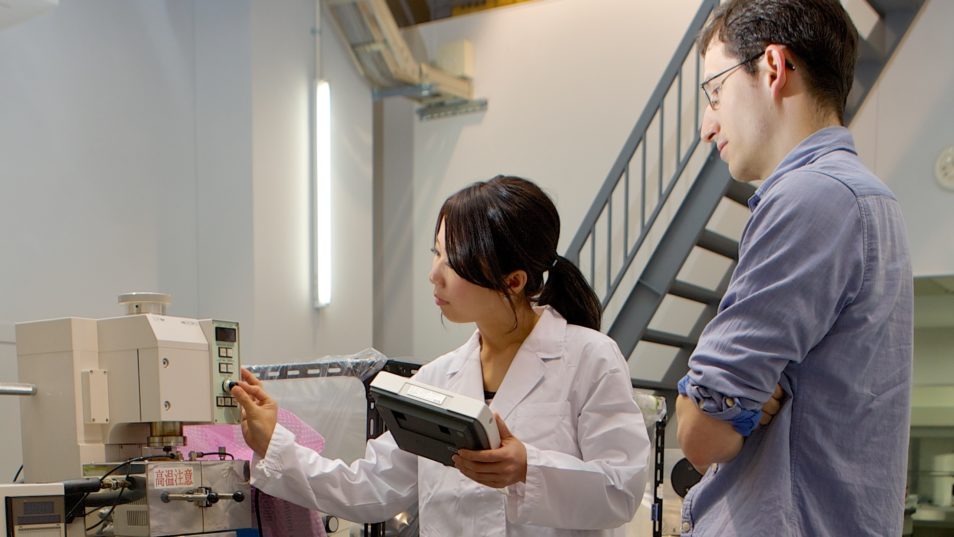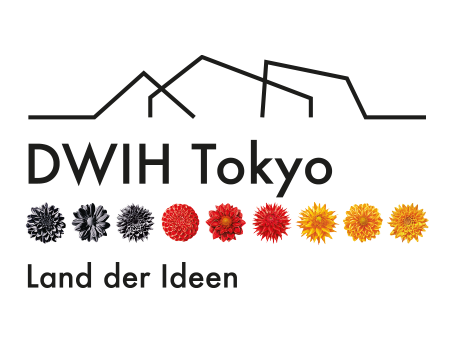Japanese-German research projects on "Optics and Photonics"
 © DWIH Tokyo
© DWIH Tokyo
Three new German-Japanese research projects from the second call for proposals (2019) on “Optics and Photonics” will start on October 1, 2020.
Link to call for proposals (2019): https://www.dwih-tokyo.org/en/2019/07/05/sicorp2019/
1) Mid-infrared and near-infrared laser source and optics for high-brightness extreme ultraviolet radiation (MIRROR)
- German partner:
Dr. Christian Grebing, Fraunhofer-Institut für Angewandte Optik und Feinmechanik (IOF), Jena - Dr. Peter Rußbüldt, Fraunhofer Institut für Lasertechnik (ILT), Aachen
- Dr. Tino Eidam, Active Fiber Systems GmbH, Jena
Japanese partner:
- Prof. Kaoru Yamanouchi, University of Tokyo
- Prof. Masakazu Washio, Waseda University
- Dr. Muneo Sugiura, Tokai Optical Co. Ltd.
Project duration: 1.10.2020-30.09.2023
Over the past decade, coherent extreme ultraviolet (EUV) to soft-Xray light sources based on high-harmonic generation (HHG) have strongly evolved. Such radiation enables the investigation of physical, chemical and biological phenomena on the atomic length (angstrom) and time (femto- to attosecond) scale and opens the door to novel scientific as well as industrial applications. Metrology applications are actinic inspection, positioning and overlay control of masks. Water-window radiation enables spectroscopic and microscopic investigations on biological specimens. The Japanese partner from the University of Tokyo, the Waseda University and Tokai Optical Co. Ltd. team up with the Fraunhofer IOF/ILT and Active Fiber Systems GmbH (AFS) as German academic and industrial partner to develop novel mid-IR and near-IR laser sources and optics for the generation of high-brightness EUV radiation. The academic partners investigate the generation of powerful femtosecond pulses at 2 µm wavelength. Tokai Optical will develop optics such as dispersive mirrors for powerful mid-IR radiation. AFS will focus on the realization of the XUV to soft-Xray beamline in cooperation with the academic partners.
2) Miniaturized full-organic spectroscopic NIR-OLED-sensor-systems (FLEXMONIRS)
German partner:
- Prof. Dr. Karl Leo, TU Dresden
- Dr. Ronny Timmreck, Sensorics GmbH, Dresden
Japanese partner:
- Prof. Dr. Junji Kido, Yamagata University
- Keiichi Ito, ITO Electronics Co. Ltd.
Project duration: 1.10.2020-30.09.2023
In FLEXMONIRS, excellent research and industry partners from the Yonezawa and Saxony
region strengthen their existing partnership in a project of mutual scientific and business interests, developing miniaturized spectroscopic near-infrared (NIR) sensor systems for specific applications in demanding fields such as, for example, agri-food quality control and food packaging, where available technologies fail. Currently, NIR sensors are of great importance for quality control, specific molecule identification, etc. in various markets. However, these systems are either bulky, heavy, and expensive or they cannot reach wavelengths beyond 1000 nm, which strongly restricts possible applications. In recent research, the TU Dresden and Senorics have developed an organic NIR detector, which could radically change the application scenarios for spectroscopic NIR analysis with low-cost, miniaturized, highly functional devices. Yet, miniaturization is restricted to currently available illumination sources which are necessary for the measurement process. Building on the same production process, organic light emitting diodes (OLEDs) would allow for seamless integration of illumination source and sensor, but NIR emitters with emission beyond 1000 nm are currently missing. Recent research on NIR-OLEDs at YU has shown much promise and suggests this technology to be the ideal counterpart for the manufacturing of dual-device NIR sensor systems. ITO Electronics has experience in device design, electronic circuit and mass production for miniaturized electronic modules. Within this project, the partners will manufacture a prototype of an integrated NIROLED-sensor system combining the technologies of both sides.
3) Novel plasmonic materials based on nanogap features for ultrasensitive and reproducible biosensing for biomedical applications (PlasmoBioSense)
German partner:
- Prof. Dr. Wolfgang Fritzsche, Leibniz Institute of Photonic Technology (IPHT), Jena
- Thomas Ruhl, Temicon GmbH, Dortmund
Japanese partner:
- Prof. Dr. Eiichi Tamiya, Osaka University, Osaka
- Assoc. Prof. Shin-ichi Tanaka, Kure National College of Technology, Kure, Hiroshima
- Dr. Yasushi Nishimori, Furuno Electric Co. Ltd., Nishinimiya, Hyogo
- Dr. Hiromi Ushijima, Biodevice Technology Ltd., Nomi, Ishikawa
- Dr. Bin Fan, Optorun Ltd., Kawagoe, Saitama
Project duration: 1.10.2020-30.09.2023
The project is aimed at novel kind of sensor substrate addressing both surface-enhanced Raman spectroscopy (SERS) and localized surface plasmon resonance (LSPR) (bio)analytics. These substrates are based on noble metal nanostructures which are fabricated applying a hybrid approach, using chemically synthesized plasmonic nanoparticles arranged in a regular pattern and arrangement defined by a replication technology, with subsequent modification steps. These substrates will reach a high level in sensitivity, but will be nevertheless cost-efficient due to the potential massive parallelization of the underlying replication process. In the project, both approaches will be tested for different (LSPR/Optical Waveguide (OW) SPR as well as (Electrochemical (EC)-)SERS) applications, and compared in their performance. The German side specializes in the design and the fabrication of the metallic nanostructures for SERS and LSPR biosensors exhibiting high sensitivity based on nanogap structures by utilizing NIL substrates and subsequent metal deposition based on simulations and modelling. The Japanese side is professional in the field of biomedical engineering and biosensors by using SERS and EC-SERS as well as OW. These methods have potential to detect biomarkers such as genes (DNA, RNA) and proteins (antibody, enzyme, hormone, etc.) related to medical diagnosis. Cooperation between German and Japanese groups is required to realize the innovative, highly sensitive and multi-functional LSPR/SERS biosensor, which will – based on the expected boosted sensitivity – revolutionize clinical diagnosis and accelerate the development of handheld and user-friendly point-of care devices.
